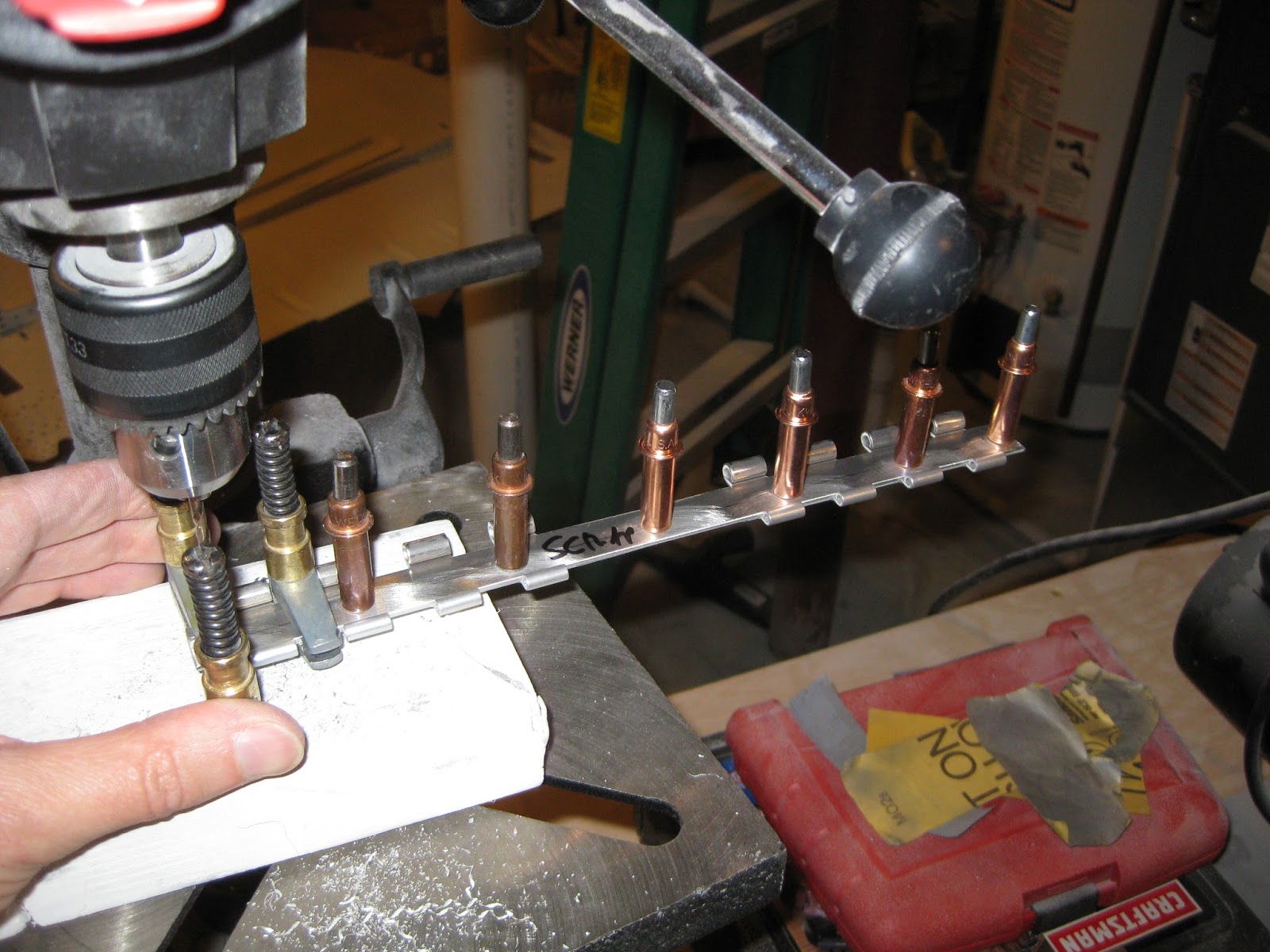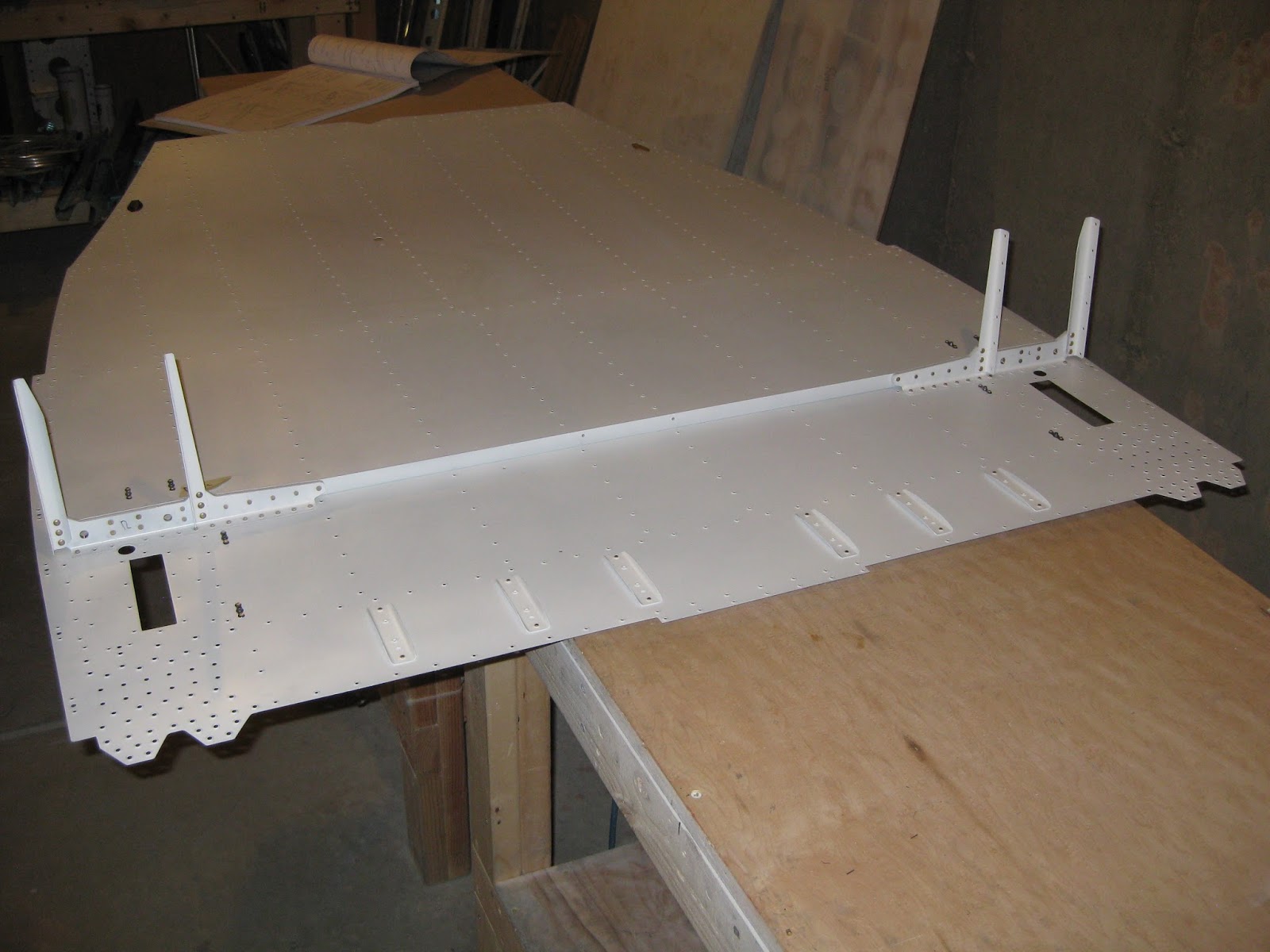My new bulkheads and associated parts came in a quaint little crate.
This time the bulkheads were packed with some material between them to isolate the parts. When shipped in the fuselage kit, they do not come that way and end up with some
surface marring. Guess there's one good thing about having to replace these, right?
So, not wanting to repeat the
mistake made on reaming the original bulkheads, I opted to do it myself in my shop. You'll notice that the cover ribs are not yet on the forward bulkhead, but the angles are. I decided to ream the bulkheads before the cover ribs are riveted on, contrary to plans. This makes the assembly easier to negotiate on the drill press. You'll also notice judicious clamping and cleco usage (latter isn't visible) to ensure the bulkhead web sits flush against the flange at all times.
Van's reams the bulkhead parts at the factory (this is verified by communication with Van's). Thus, if everything is lined up properly, the reamer should slip in and out of the bulkhead hole with no friction. That is how I ensured alignment. Once I could lower the reamer down into the hole with no impediments, when on the chuck, I lubricated the reamer, fired up the drill press and
very slowly dropped the chuck to ream the angle and webs. Below shows just how little material needs to be removed. This was after reaming a 0.375" hole in the angle. The material that was removed appears to be mostly primer (due to the camera's flash), but it is aluminum.
Using gauge pins (both
0.375" and
0.311"), it's easily verifiable that my reamed holes are perfectly cylindrical and quite snug.
With that out of the way, it was time to rivet the associated ribs on to both bulkheads. I mostly used the
same approach as on the original bulkheads. Except...
Turns out that the
longeron yoke can reach a lot of floor rib rivets. I wish I had realized this before I had bucked almost all of the other rib-to-bulkhead rivets. In fact, I believe it could be used to rivet the topmost rivet in the cover ribs,
which I had to put on backwards because I couldn't find a way to get the rivet set in there.
And here the aft bulkhead assembly sits awaiting mating to the skin.















































